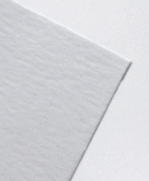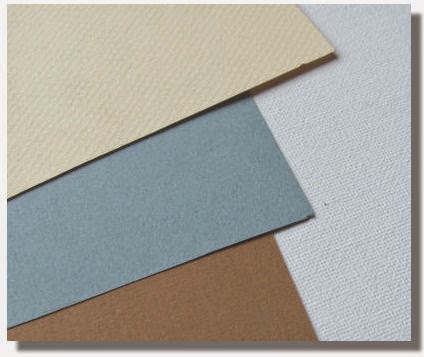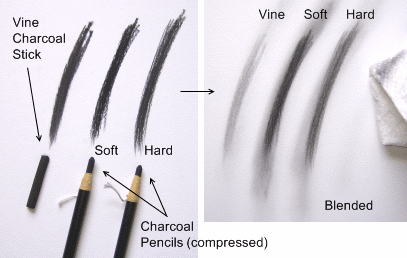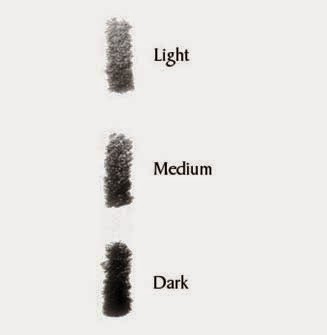Tools for Drawing with Charcoal
When using charcoal to draw, a few tools will need to be at your disposal. First, you may need a variety of different types of charcoal- vine, compressed, pencil form.
You will also want to have a kneaded eraser
Paper
Choose a white, thicker paper with a slight texture. If it's too smooth the charcoal wont stick to the paper. If it's too textured you'll have a hard time drawing details. The texture on paper pictured below is just right! It came from a Strathmore 300 Series Bristol Board Vellum Pad. Some watercolor and printmaking papers are also excellent choices (for example: Rives BFK white). Avoid cream or colored papers. If it's your first time buying art paper I recommend visiting an art store in person so that you may feel and compare a wide variety of papers.
Grainy paper is preferred because of the variety of textures you can achieve. Again bockinford is the preferred paper
try different makes to best suit your needs. You don't have to draw on normal white paper, you can also use coloured paper like grey or blue, the colour of brown wrapping paper is also good to draw on with charcoal and on the reverse side is a little grainy which is good for texture
Vine Charcoal
(also called Willow charcoal) This is uncompressed charcoal that's easy to erase.
Vine charcoal is easily spread on a surface and is very easy to erase. As a consequence it is generally makes a lighter mark when you draw than compressed charcoal and easily smudges. (Which may be a benefit.)
Compressed Charcoal
(pencil or stick) Comes in soft, medium and hard - just like graphite, soft is darker and hard is lighter!
Compressed charcoal is held together by a gum binder and is darker than vine charcoal. As a result, it is harder to erase, harder to smudge, but makes a darker mark. Compressed charcoal may come as a round stick, a square stick, or in a pencil. (Vine charcoal is almost always a round stick.) Some compressed charcoal is pigmented. This is the case with white compressed charcoal.
Kneaded Eraser
Soft, pliable gray eraser that you can
squeeze into any shape (good for creating subtle gradations).A kneaded eraser is a special type of eraser that is designed to lift the material off of the surface. Kneaded erasers work especially well with charcoal.
Gum and/or white erasers
Harder erasers (good for erasing the most charcoal to reveal white highlights).
Blending stump (also called tortillon)
Good for blending smaller detail areas.You may also want to have a blending stump. A blending stump will allow you to have full control over the blending and smearing of the charcoal. You can create a blending stump by tightly rolling up drawing paper to a point.
If you are drawing on a flat surface, it's also a good idea to have a paper towel handy. You can lay the paper towel between your hand and the surface of the drawing, so that your hand doesn't smear your work.
Paper towels
Good for blending large areas and "erasing" vine charcoal sketches.
Spray Fixative (Optional)
Spray fix helps to protect a drawing once it's finished by preventing smearing. It "fixes" or sets the media onto the paper. Because charcoal drawings are often very dusty, this is a common practice. There are different types of fixative.
There is workable fixative which allows for some work to done on the artwork after it has been "fixed". There is also final fixative, which is used when the drawing is finished. Most artists, like myself, chose to only use workable fixative, since you may chose to go back to drawing and work on it at a later time.
Fixative comes in a spray can and is applied by spraying it onto the artwork. The best way to do this is in a well-ventilated area with the spray can held about a foot away from the artwork. Hairspray can be used in place of fixative but it can darken the surface so it is not recommended
Charcoal characteristics:
Vine charcoal erases easily - Start out with vine charcoal, erasing mistakes as you go.
Compressed charcoal has more staying power - Once you have a good vine charcoal sketch, move on to your compressed charcoal pencils. Just like with graphite pencils, start out with your harder(ligher) charcoal and end with the softer(darker) charcoal pencils.
Charcoal Pencils
Charcoal pencils give you more control and are best for adding detail.
This is denser and oilier stuff owing to a higher degree of graphite, producing beautiful darks that are a whole lot more difficult to remove when you goof in your charcoal drawing. It doesn't blend nearly as well as vine, either. These qualities make it leave more permanent traces in your drawing.
High Contrast vs. Low Contrast:
Charcoal has the ability to go rich dark black. Give your drawing more pop and drama by including areas of white, various shades of gray, as well as areas of black in your composition. Low contrast drawings tend to look unfinished - avoid low contrast compositions unless subtlety is what you are going for.
Tips for Holding The Charcoal
Vine charcoal and compressed sticks should be held differently in your hand than a drawing pencil. It will vary from artist to artist, but my suggestion is to hold the charcoal with your thumb and forefinger with your palm facing the surface of the paper.
This allows you to make marks using your shoulder and elbow instead of with just your wrist.










No comments:
Post a Comment